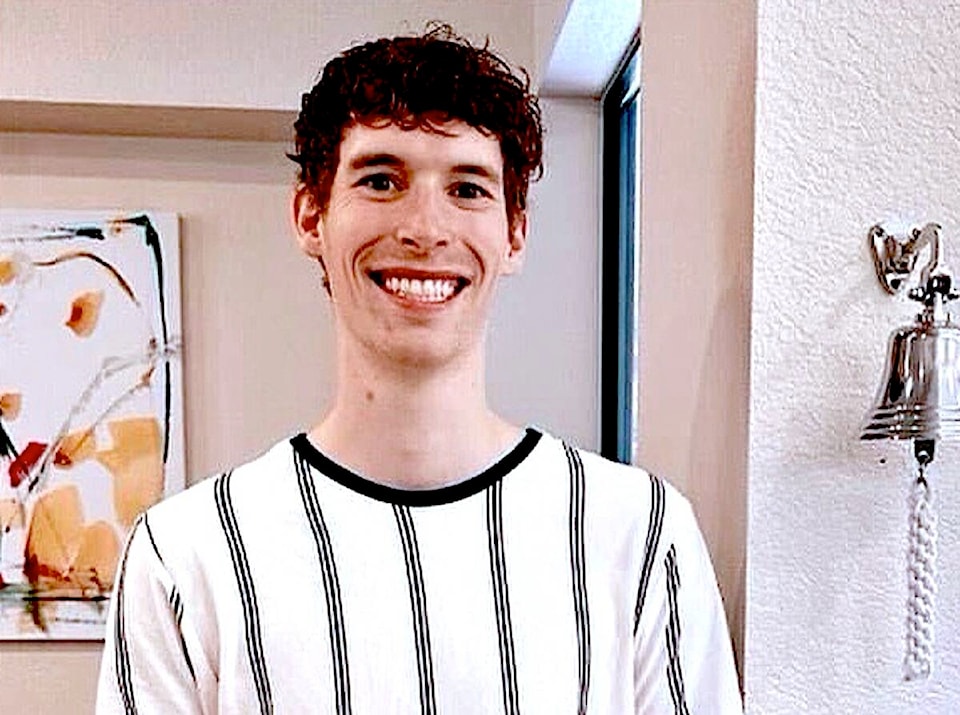After six years of living in torment from a throbbing leg he couldn’t stand on, Red Deer native Jacob Higham is playing basketball again and has no need for pain meds.
The 25-year-old returned from the Spero Clinic in Arkansas cured from a supposedly incurable condition that had plagued him since he sprained his ankle in 2017.
After six years of having to rest his right knee on a scooter to keep his painful foot from bearing any weight, the feeling of just being able to walk, run or stand again is hard for Higham to describe: “That’s a heavy question…It feels like I have my life back.”
Getting back on the basketball court with a high school friend recently “was a joy,” he recalled.
“To be able to walk without concerns about slipping, or having somebody bump into my leg… gives me a sense of freedom and a sense of opportunity.”
His Complex Regional Pain Syndrome (CRPS) is a rare condition that resulted from nerve damage in his foot, which had turned purple, ice-cold and immobile.
Higham, the son of Red Deer city councillor Vesna Higham, learned his rare and supposedly incurable neurological condition was due to damaged neuropathways sending misfiring signals to the brain, causing him to feel his foot was on fire.
Sufferers with CRPS register pain out of all proportion to the severity of the initial injury. The pain registers higher than childbirth, amputation and shingles on the McGill University Pain Index and required him to take 3,600 mg of meds each day to achieve a numbing effect.
Although Higham tried an array of intensive and invasive treatments in Canada — including getting four spinal blocks, the hydro-dissection of a nerve, plasma injections, ganglion stimulation surgery, implanted permanent electrodes in his vertebrae tissue — nothing seemed to lessen his agony. He had even considered amputation.
Luckily, Higham was referred by a friend to the U.S. chiropractic-based clinic, which has an 85 per cent success rate in treating people with CRPS. His mother spoke to former patients, and believed this could be the answer.
The $70,000 cost of the four-month treatment regime was not covered by health insurance, so a GoFundMe campaign was started for Jacob last spring, with many community members making contributions.
Higham said words cannot express how grateful he feels that so many friends, acquaintances and even strangers helped him get to this life-changing outcome. “I’m so very grateful for everyone who donated. They all helped me — they gave me my life back.”
His 17 weeks in Arkansas were arduous ones. Treatments ranged from manual nerve stimulation to neuro-muscular ionization and half an hour daily of electro-therapy in his legs. The latter felt like having a muscle cramp in your calves, recalled Higham, who had to listen to music on the ride to the clinic to mentally psyche himself up for the experience.
While the electricity was coursing to his legs, he had to repeat various exercises to rebuild the neuropathways in his brain. “I was training my body to engage and disengage specific muscle groups for specific movements.”
The ultimately achieved goal was to have his nervous system “at peace” so it wasn’t stressing out when placed in stressful situations, said Higham.
He recalled a wondrous moment in July when his chiropractor asked whether he had felt any leg pain that weekend and the dawning, revelation hit him that he, in fact, had not.
“When you live with pain for six years, it was so bizarre, so foreign to me, to have no pain, that I almost didn’t know what that feels like…”
At the end of his treatment on Aug. 31, he was assured that his brain had been re-trained so any future ankle sprains would result in normal healing.
This experience not only changed Higham’s life but his career path: The University of Lethbridge psychology/neuroscience student intends to continue his education at a chiropractic college in Georgia in the hope he can eventually return to work at the Spero Clinic.
“They helped me, now I would like to be of service and help other people with CRPS,” he said.
